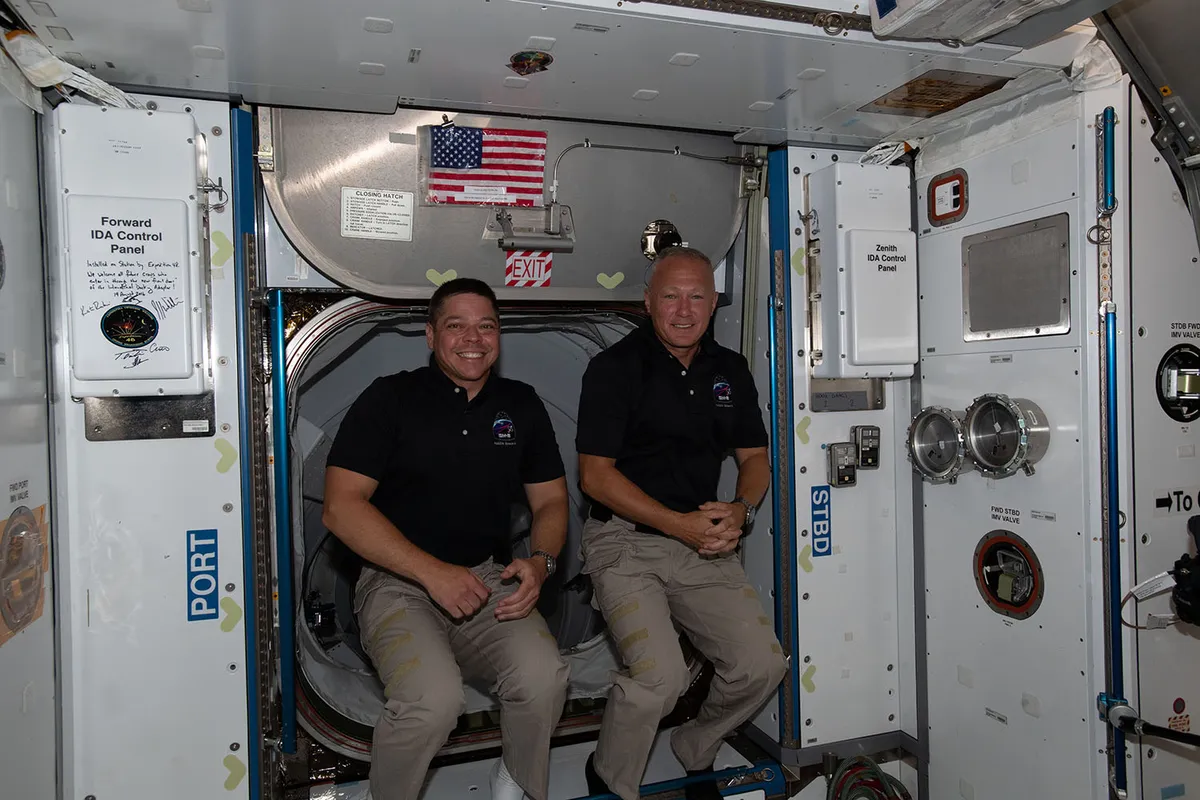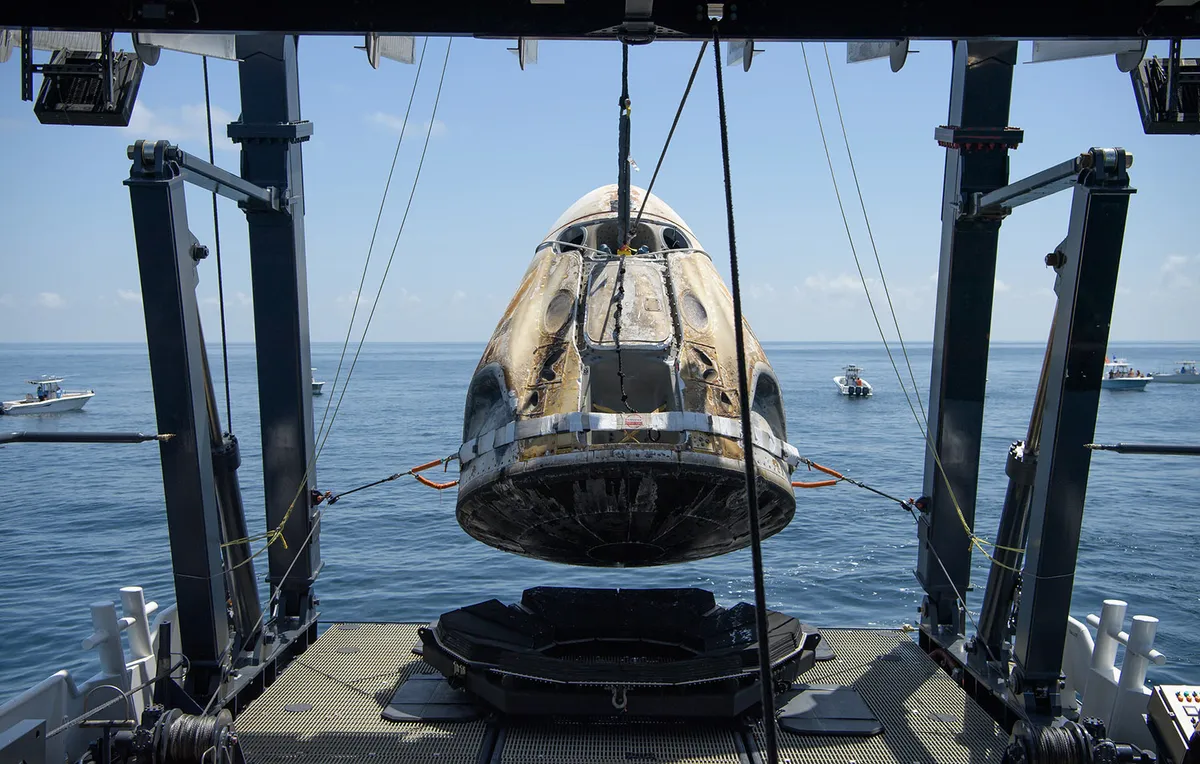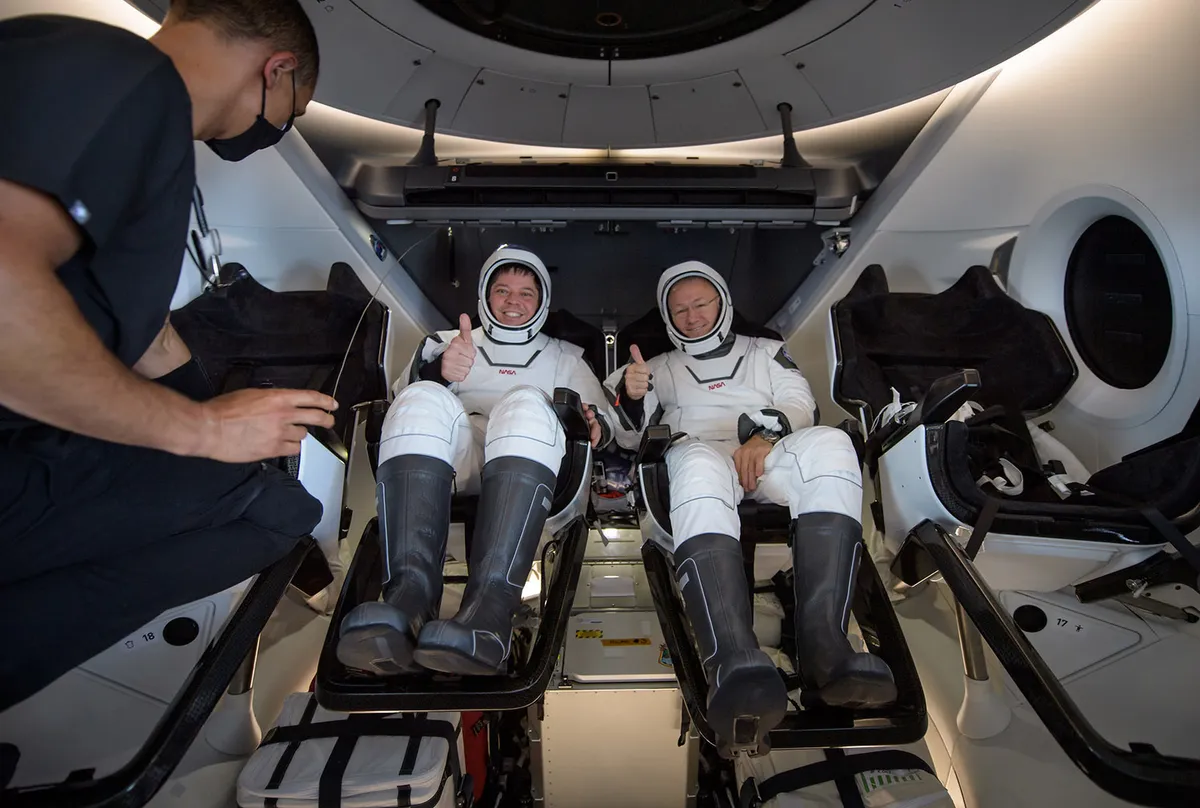NASA astronauts Robert Behnken and Douglas Hurley have splashed down in their spacecraft in the Gulf of Mexico, marking the successful conclusion of the first crewed Commercial Crew Program flight to the International Space Station. The SpaceX Crew Dragon spacecraft carrying the astronauts parachuted and safely splashed down off the coast of Florida at 18:48 UTC on 2 August 2020.
The SpaceX Demo-2 test flight launched on 30 May 2020 from Kennedy Space Center in Florida, marking the first crewed launch in NASA's Commercial Crew Program.
The Crew Dragon then docked with the International Space Station’s Harmony module on 31 May.
The mission, named Demo-2, was the final test for SpaceX’s human spaceflight system ahead of its certification by NASA for crewed missions to and from the International Space Station.

Demo-2 marks the beginning of a new era of American commercial flights to the ISS, seeing NASA astronauts launch from the US for the first time since the retirement of the Space Shuttle in 2011.
Since then, NASA astronauts have been launching aboard the Russian Soyuz rocket and returning via the Soyuz capsule.
Demo-2 will provide data on the performance of the Falcon 9 launch vehicle, the Crew Dragon spacecraft and the systems that support ground control as well as in-orbit, docking, splashdown and recovery procedures.

During their stay on the ISS, Behnken and Hurley undertook science experiments, conducted spacewalks, spent 64 days in orbit and completed 1,024 orbits around Earth.
Their splashdown was the first for US astronauts since Thomas Stafford, Vance Brand and Deke Slayton landed in the Pacific Ocean on 24 July 1975, at the close of the Apollo-Soyuz Test Project.
"Welcome home, Bob and Doug! Congratulations to the NASA and SpaceX teams for the incredible work to make this test flight possible," says NASA Administrator Jim Bridenstine.
"It’s a testament to what we can accomplish when we work together to do something once thought impossible. Partners are key to how we go farther than ever before and take the next steps on daring missions to the Moon and Mars."

"On behalf of all SpaceX employees, thank you to NASA for the opportunity to return human spaceflight to the United States by flying NASA astronauts Bob Behnken and Doug Hurley," says SpaceX President and Chief Operating Officer Gwynne Shotwell.
"Congratulations to the entire SpaceX and NASA team on such an extraordinary mission. We could not be more proud to see Bob and Doug safely back home.
"We all appreciate their dedication to this mission and helping us start the journey towards carrying people regularly to low Earth orbit and on to the Moon and Mars. And I really hope they enjoyed the ride!"
